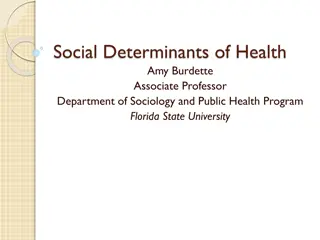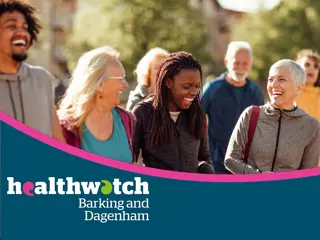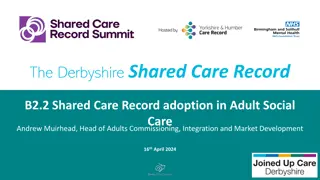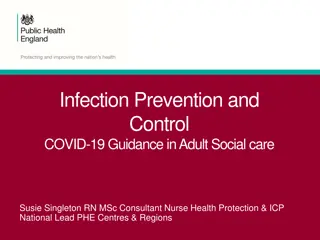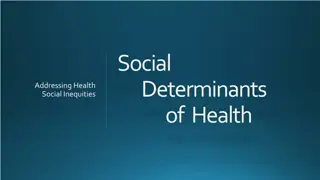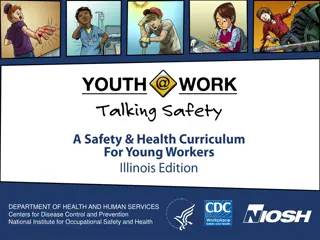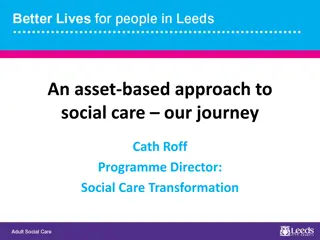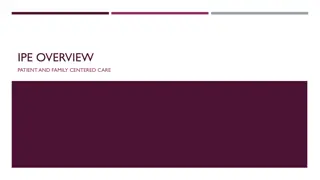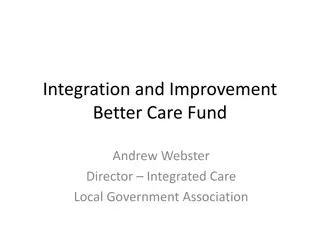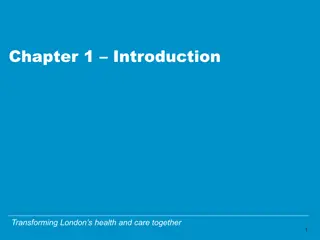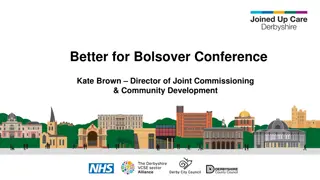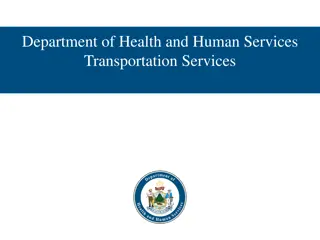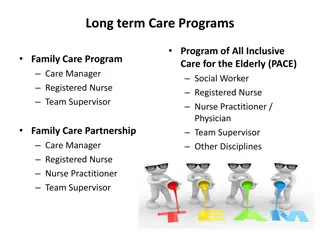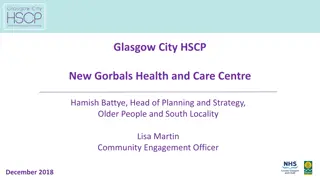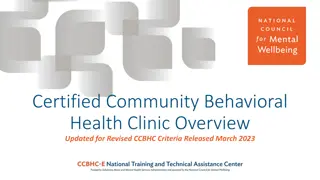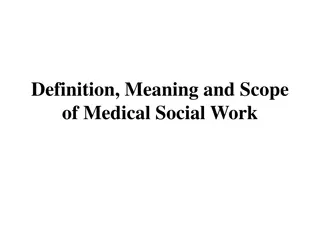Transforming Health and Social Care Services for Quality and Safety
Ensuring safe, effective, and compassionate care in health and social services is crucial. Our approach involves monitoring, inspecting, and regulating services to uphold fundamental standards. By encouraging improvement and transparency, we aim to empower individuals in making informed care choices. The landscape of care spans various sectors, serving millions annually. Our new regulations emphasize care user welfare, quality assessment, abuse prevention, cleanliness, medication management, nutrition, and more. Upholding person-centered care, dignity, and respect is at the core of our mission.
Download Presentation

Please find below an Image/Link to download the presentation.
The content on the website is provided AS IS for your information and personal use only. It may not be sold, licensed, or shared on other websites without obtaining consent from the author. Download presentation by click this link. If you encounter any issues during the download, it is possible that the publisher has removed the file from their server.
E N D
Presentation Transcript
Our New Approach Presenters: Jane Jewell Inspection Manager & Steve Rust Inspector National Care Association 13 August 2015 1
Our purpose and role Our purpose We make sure health and social care services provide people with safe, effective, compassionate, high-quality care and we encourage care services to improve Our role We monitor, inspect and regulate services to make sure they meet fundamental standards of quality and safety and we publish what we find, including performance ratings to help people choose care 2 2
The landscape of care General public Home-care Care homes 54.5 million (44.5m adults) 565,000 residents 700,000 people receiving home-care support per year 165,000 going into care per year Private hospital 1.61 million people receive surgical treatment in a private hospital / year 39,000 people with learning disabilities in residential care NHS hospitals 90 million outpatient appointments / year 18,000 in a care home or care in their own home with no kith or kin Dentists 11 million inpatients / year 22 million on a dentist list 18 million A&E attendances 15 million NHS 5 million emergency admissions / year 7 million private GP practices 600k maternity users 52 million registered with a GP Health & social care staff 42,000 detained and treated against their will 1.7m NHS staff 150m appointments / year 1.5m in adult social care Stroke 1m Diabetes 3m Arthritis 8.5m Cancer 2m Dementia 0.7m 25% by 2020 67% by 2025 100% by 2030 100% by 2032 100% by 2040 NB There is overlap between our different audiences none are wholly distinct from the others
Fundamental Standards New Regulations Previous regulations Care and welfare of service users Assessing and monitoring the quality of service provision Safeguarding service users from abuse Cleanliness and infection control Management of medicines Meeting nutritional needs Safety and suitability of premises Safety and suitability of equipment Respecting and involving service users Consent to care and treatment Complaints Records Requirements relating to workers Staffing Supporting workers Cooperating with other providers Person-centred care Dignity and respect Need for consent Safe care and treatment Safeguarding service users from abuse Meeting nutritional needs Cleanliness, safety and suitability of premises and equipment Receiving and acting on complaints Good governance Staffing Fit and proper persons employed and Fit and proper persons requirement for directors Duty of candour 5
Asking the right questions about quality and safety Safe Effective Caring Responsive to people s needs Well-led 6
KLOEs Well-Led For residential adult social care we ask: W1 How does the service promote a positive culture that is person-centred, open, inclusive and empowering? W2 How does the service demonstrate good management and leadership? W3 How does the service deliver high quality care? W4 How does the service work in partnership with other agencies? 7
Well-led Some high level characteristics of Outstanding The service has a track record of being an excellent role model, actively seeking and acting on the views of others through creative and innovative methods. There is a strong emphasis on continually striving to improve. The service finds innovative and creative ways to enable people to be empowered and voice their opinions. The vision and values are imaginative and person- centred and make sure people are at the heart of the service. 8
KLOEs SAFE For residential adult social care we ask: S1 How are people protected from bullying, harassment, avoidable harm and abuse that may breach their human rights? S2 How are risks to individuals and the service managed so that people are protected and their freedom is supported and respected? S3 How does the service make sure that there are sufficient numbers of suitable staff to keep people safe and meet their needs? S4 How are people s medicines managed so that they receive them safely? 9
Safe Some high level characteristics of Outstanding High level of understanding of the need to make sure people are safe. People who use the service and staff tell us they are actively encouraged to raise their concerns and to challenge when the feel people s safety is at risk Staff have exceptional skills and the ability to recognise when people feel unsafe. The service is creative in the way it involves and works with people, respects their diverse needs and challenges discrimination. Staff show empathy and have an enabling attitude that encourages people to challenge themselves, whilst recognising and respecting people s lifestyle choices. 10
Rating four point scale High level characteristics of each rating level Innovative, creative, constantly striving to improve, open and transparent Consistent level of service people have a right to expect, robust arrangements in place for when things do go wrong May have elements of good practice but inconsistent, potential or actual risk, inconsistent responses when things go wrong Significant harm has or is likely to occur, shortfalls in practice, ineffective or no action taken to put things right or improve 11
How we make a judgement Inspection teams will base their judgements on all the available evidence, using their professional judgement. They will particularly use the key lines of enquiry, the prompts and our guidance on the ratings levels. When making our judgements, we will consider the weight of each piece of relevant evidence. In most cases we will need to corroborate our evidence with other sources to support our findings and enable us to make a robust judgement. When we have conflicting evidence, we will consider the weight of each piece of evidence, its source, how robust it is and which is the strongest. We may conclude that we need to seek additional evidence or specialist advice in order to make a judgement. 12
Rating Principals The five key questions have equal weighting and contribute equally to the overall location rating. Overall location ratings are produced using principles that show what the aggregated, overall rating is for all the possible combinations of five key question ratings. These principles are: If twoor more of the key questions are rated inadequate , then the overall aggregated rating will normally be inadequate . If oneof the key questions is rated inadequate , then the overall rating will normally be requires improvement . If two or more of the key questions are rated requires improvement , then the overall rating will normally be requires improvement . At least twoof the five key questions would normally need to be rated outstanding before an aggregated rating of outstanding can be awarded. 13
Limiters to ratings The location has a condition of registration that it must have a registered manager but it does not have one, and satisfactory steps have not been taken to recruit one within a reasonable timescale. The location has any other another condition of registration that is not being met without good reason. Statutory notifications were not submitted in relation to relevant events at a location without good reason 14
Quality Assurance Process We have made a commitment to having strong internal quality control mechanisms, including peer reviews, Quality panels that consider a sample of rating judgements to check consistency. We will involve people who use services, their families and carers in these panels. We have also set up an Academy for our inspectors to ensure that they are well trained and supported and work in a consistent way. We are also building in mechanisms to make sure our inspection reports are published in a good time, that they are clearly written in plain English and that our ratings are well publicised. 15
Judgment findings July 2015- ASC 27 (<1%) locations as Outstanding 3506 (58%) as Good 2081 (34%) as Requires Improvement 444 (7%) as Inadequate Total of 6058 16
Our enforcement powers Not an escalator more than one power can be used
So what else has changed ? Market oversight responsibilities Special measures Display of ratings Duty of Candour Fit and proper persons: directors 18
Thank you www.cqc.org.uk enquiries@cqc.org.uk @CareQualityComm 19



